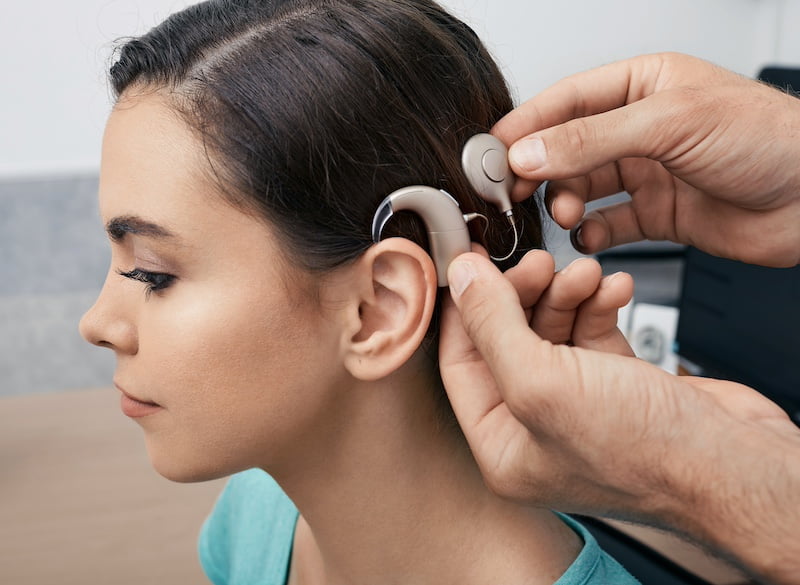Hear ye, hear ye with these alternative hearing solutions!
For a practice dedicated to dialling up one of our most vital senses, perusing the list of options for alternative hearing solutions can easily turn into a slippery sensory overload slide.

From middle ear implants to auditory brainstem implants, the general population wasn’t kidding—when it comes to body modifications, there truly is an implant for everything. Recognizing how society has a way of making us feel like we have nothing to wear while staring at a full closet, we consider this set-up a humble brag about how our colleagues are constantly successfully finding innovative solutions to restock our patients’ options.
To breakdown this privileged-problem, today, we’ll hone in on two such alternatives: cochlear implants and bone conduction devices.
How cochlear implants work
Cochlear implants work as an alternative hearing solution for people with severe to profound hearing loss by directly stimulating the auditory nerve. The system has two main components: an external processor and an internal implant. The external processor captures environmental sounds and converts them into digital signals, which are sent to the internal implant.
This internal component is surgically placed under the skin behind the ear and contains an electrode array that is inserted into the cochlea, the inner ear’s spiral-shaped organ. The electrodes then send electrical impulses to the auditory nerve, which transmits the signals to the brain, enabling the user to perceive sound.
Who can benefit from cochlear implants?
Cochlear implants can benefit individuals with severe to profound sensorineural hearing loss who do not adequately respond to traditional hearing aids. These individuals often struggle with understanding speech, even with amplification, due to damage to the hair cells in the cochlea, the organ responsible for converting sound waves into electrical signals for the brain. Cochlear implants are also beneficial for children born with profound hearing loss, as early implantation can support language development and social skills.
Additionally, adults who experience a sudden loss of hearing or who have progressively lost their hearing over time can regain a sense of sound and improve communication through cochlear implants.
How bone conduction devices work
Bone conduction devices work as an alternative hearing solution by transmitting sound vibrations through the skull bones directly to the inner ear, bypassing the outer and middle ear entirely. Unlike traditional hearing aids, which amplify sound through the ear canal, bone conduction relies on the principle that sound waves can travel through solid structures. A small transducer, usually placed behind the ear, converts audio signals into vibrations, which are then sent through the skull bones to the cochlea, the hearing organ in the inner ear.
Who can benefit from bone conduction devices?
Individuals with conductive hearing loss, often caused by problems in the outer or middle ear like atresia, microtia, or chronic ear infections, can benefit from bone conduction devices as they bypass the damaged areas to transmit sound directly to the inner ear. Additionally, people with single-sided deafness find bone conduction helpful because it sends sound from the non-hearing side to the healthy cochlea, allowing them to better perceive sound and improve spatial awareness. Moreover, bone conduction devices are a great alternative for those who cannot use traditional hearing aids due to recurring ear infections or other ear canal problems.
Tone down the sensory overload by tuning in with these devices
They say options open doors, but some entryways are a little more jammed than others (and don’t we know it).
As Hearing Instrument Practitioners (HIPs), it’s crucial to be aware of these alternative hearing solutions to provide the best care for your patients. Cochlear implants and bone conduction devices offer unique advantages for individuals who might not benefit from traditional hearing aids. Understanding the workings, benefits, and candidate profiles for each solution can guide you in recommending the most appropriate form of intervention for your patients.
Thankfully HIPs are proficient in aiding communication relays, so let our AHIP explainer be the breaching battering ram that lets the options open ears instead.
AHIP is not and shall not be liable for any of the views expressed by the authors or advertisers on the Signal Blogs. The authors’ opinions and the advertisers’ content do not necessarily reflect AHIP’s views.



